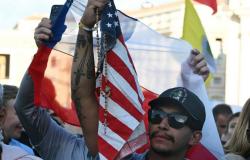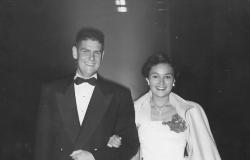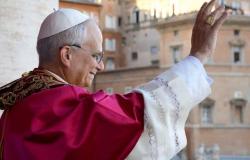pope Léon XIV has just been elected after the conclave. Back to the past with a visit to the Somme, in Ham more precisely.
On May 21, 1951, Angelo Giuseppe Roncalli, Apolistic Nonce, was visiting Ham. In October 1958, he was appointed Pope under the name of John XXIII.
He will mark his pontificate by abandoning Latin during the masses. He will be beatified in 2000 by John Paul II.
Angelo Giuseppe Roncallibetter known as Jean XXIIImarked the history of the Catholic Church by its humility, its modernity and its desire to reform a millennial institution in depth. Nicknamed the “good pope”, there remains one of the most popular and influential pontiffs of the 20th century. Back on the exceptional journey of a man who has managed to combine tradition and openness to the world.
An unexpected pope
When Jean XXIII was elected pope on October 28, 1958he is 76 years old. The cardinals thought they had chosen a transitional pope, an elderly pontiff intended to maintain the church in continuity after the long reign of Pius XII. But that was without counting on the warm personality and resolutely turned towards the future of Angelo Roncalli.
Coming from a modest peasant family in northern Italy, John XXIII is not an aristocrat of the Church. What distinguishes him from the start is his benevolent tone, his sense of humor and his ability to speak to the faithful with simplicity. He quickly breaks with the icy solemnity of his predecessors. Very quickly, the world discovered a pope close to the people.
A reforming vision
From the first months of his pontificate, John XXIII sets the tone: January 25, 1959he completely announces the summons of a ecumenical councilthe first since that of Vatican I, more than 90 years ago.
It will be Vatican Council IIlaunched in 1962. His goal: Update the church (“aggiornamento”) and adapt it to the realities of the contemporary world. It is not a question of changing the doctrine, but of renewing its presentation, of promoting interreligious dialogue, of enhancing the participation of laity and of encouraging openness to modern sciences and culture.
John XXIII will not see the end of the council, which he solemnly opens the October 11, 1962but its impulse remains central in the reforms which will result from it.
A papacy placed under the sign of humanity
John XXIII also upsets pontifical uses. He visits the sick, prisoners, children. He multiplies the gestures of opening, receiving non-Christian delegations and stretching hands with non-believers. He is the first pope to speak of respect for human rights in an encyclical.
In Peace on earthpublished in avril 1963a few months before his death, he called for peace between peoples, respect for individual conscience and dialogue between nations. In a context of cold war, this text, addressed “to all men of good will”, is a humanist manifesto of a universal scope.
A popular and endearing figure
John XXIII is not essential by dogmas, but by his human charisma. It is said that he often joked with visitors. When a journalist asked him how many people worked in the Vatican, he replied with a smile: “Oh, about half! »»
His bonhomie, his deep faith and his authenticity affect far beyond the Catholic world. It becomes a moral figure recognized by all. When he died, the June 3, 1963millions of people cry “the Pope of the People”.
A sustainable heritage
The Pontificate of John XXIII, although relatively short (less than five years), marked a turning point. Vatican II will lastingly transform the liturgy, the relationship of the Church to the world, and the way in which Catholics live their faith.
Its canonization, the 27 avril 2014by Pope Francis, alongside John Paul II, sealed his status as Reforming and visionary pope. Even today, it is a model for a church in search of renewal.









